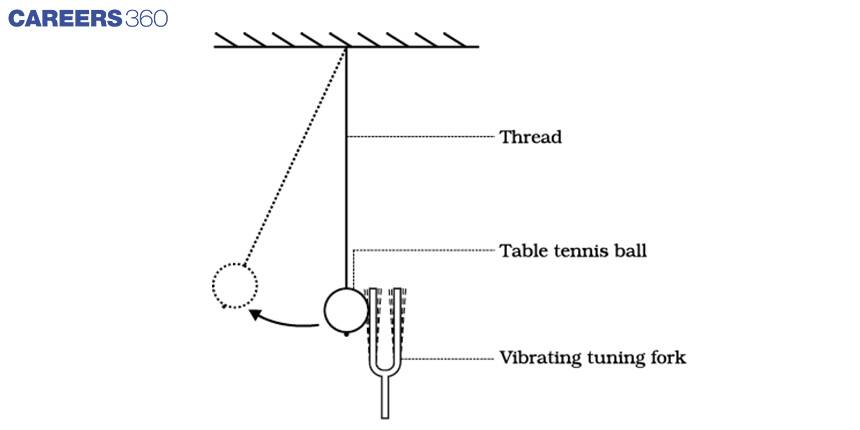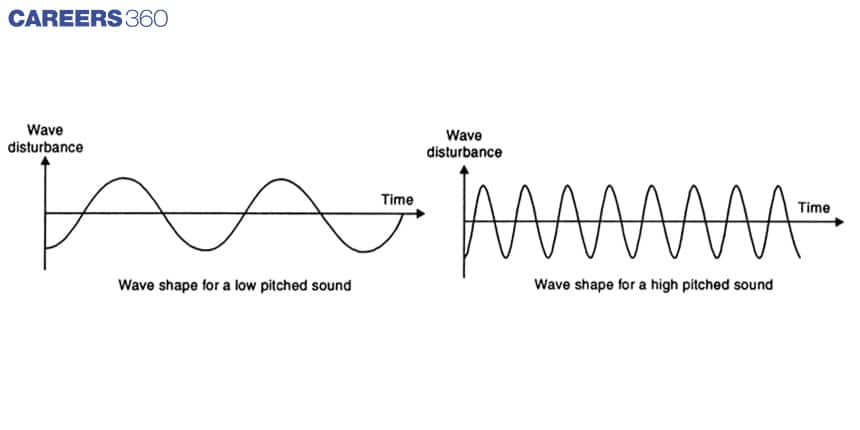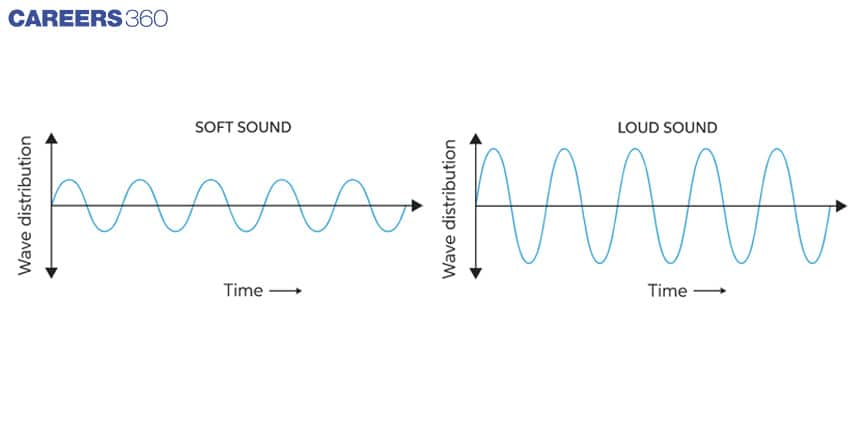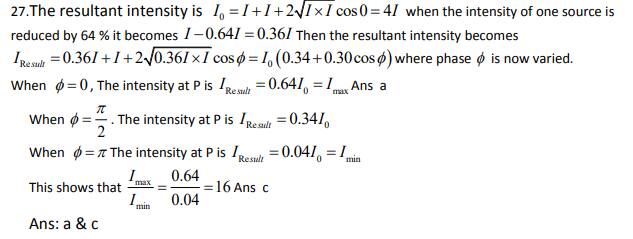How To Prepare Sound For NSEJS
National Standard Examination In Junior Science (NSEJS) contains questions from subjects physics, chemistry, and biology. Careers360 has given a detailed NSEJS Physics paper analysis as well as syllabus. For NSEJS, Sound is an important chapter. Students can go through the article to know about important concepts and learn tips for the NSEJS exam and some previous year's questions.

Tips To Prepare Sound For NSEJS
Be thorough with NCERT Class 9 sound concepts.
Solve NCERT exemplar problems.
Solve previous year's NSEJS question paper.
In our daily life we hear the sound of different objects like animals, birds, vehicles, machines, etc. sound is a form of energy that creates a sensation in our ears. Do you know how sound produces and travels from the source to our ears?
Production of Sound
Let's do an activity. Take a tuning fork. Tap it on the table and take it close to your ear. Do you hear any sound? We can also produce sound by scratching, rubbing, plucking, blowing, or shaking different objects. This means any vibrating object produces sound. Vibration is a to and fro motion of an object. Humans produce sounds due to the vibrations of the vocal cords.

Propagation of Sound
Sound is produced by a vibrating object. But how does it travel from one place to another place? It is said that we can not hear the voices of others on the surface of the moon. Do you know why?
Also Read | How To Prepare The Chapter On Motion For NSEJS
Sound Needs A Medium To Travel
Propagation of sound required a medium. The medium can be solid, liquid, or gas. When an object vibrates it sets the neighbour medium particle at vibrating mode. And thus a disturbance generates in the medium. The particles do not travel all the way from the source of the sound to the ears. But they displace neighbouring particles from their equilibrium position. This goes on until the sound reaches our ears. This means only disturbance moves all the way but medium particles do to and fro motion in their equilibrium position.
Since there is no medium in space. At the surface of the moon, there is no solid medium, no liquid medium, or no gas medium. In the absence of a medium, sound can not travel and therefore we can not hear the sound of others at the moon’s surface.
When a vibrating object moves forward it compresses the medium particles and when the object moves backward it releases the medium particles. A rapidly vibrating object creates a series of compression and rarefactions. A high-pressure and low-pressure region. This means the motion of medium particles can be visualised using a density function or a pressure function.
Sound Is A Longitudinal Waves
Propagation of sound medium is required because the sound is a mechanical wave. Any wave that requires a medium for propagation is a mechanical wave. It is of two types one is a longitudinal wave and the other is a transverse wave. Sound propagates a series of compression and rarefaction. A high-pressure zone is known as compression and a low-pressure zone known as a rarefaction. These waves are called longitudinal waves because in this medium particles do to and fro motion along the propagation of the sound wave. The Sound wave is a longitudinal mechanical wave.
If medium particles do to and fro motion perpendicular to the direction of propagation of the wave then it is called a transverse wave. For example when we drop a stone in water. The water wave generates and in this water wave medium particles vibrate perpendicular to the direction of propagation of the wave. Light is also a transverse wave but for light, the vibrations are not for medium particles, pressure, or density. It is not a mechanical wave.

Characteristics Of A Sound Wave
Sound waves can be described using
Frequency
Speed
Amplitude
Also Read | How To Prepare Force And Laws Of Motion For NSEJS
Compressions are regions where medium particles are crowded and at compression density and pressure is maximum. And in the region of rarefaction pressure and density is minimum. It can be visualised using the following image.

Wavelength: distance between consecutive compression or rarefaction is known as a wavelength. It is represented by lambda. And the SI unit is a metre. The length between compression and rarefaction is half of the wavelength.
Frequency: It tells how frequently an activity is happening. For example, a person is beating a drum. He is beating ten times a second menas the frequency of the drum is 10 times/second. We know that when sound propagates through a medium the density or pressure oscillates between the maximum value to the minimum value, and then again maximum value is known as one cycle. The number of such oscillations per second is the frequency of sound. The SI unit of frequency is hertz represented by the greek letter nu.
Time Period: time taken to complete an oscillation is time period it is 1 / frequency. SI unit of time period is second.
![]()
Pitch: It is a quality of sound that our mind interprets. The higher the frequency higher is the pitch.

Amplitude: it is the maximum disturbance from the equilibrium position of the particle. For sound, it is the maximum change of density and pressure from the mean value. Higher the amplitude louder the sound.
Also Read | How To Prepare The Unit Light For NSEJS

Speed: speed of sound is calculated using wavelength/time period

Speed of sound depends on the property of the medium. Speed is maximum in solids and minimum in gas. In any medium speed of sound increases with the increase in the temperature.
Reflection of Sound
Sound bounces back when it falls on any object similar to a rubber ball bounces back when it hits any object. Sound follows the same law of reflection as light. The direction in which the sound incident and reflect makes the angle equal with normal to the reflecting surface. Do you hear the reflected sound of your clapping near a mountain or tall building? This type of reflected sound is known as Echo. The sensation of sound in our brain persists for 0.1 seconds. If the speed of sound is 344 m/s the minimum distance travelled by sound is 34.4 m. Therefore to hear an echo 17.2m minimum distance is required. Sometimes we hear repeated sounds in a big closed hall. These are multiple reflections of sound.
Multiple reflections of sound have different applications. In a stethoscope, doctors use this principle to hear the sound of the heart. Horns, megaphones or loudspeakers, and musical instruments like shehnais, are all designed to send sound in a particular direction without spreading it in all directions. Generally, the ceilings of the conference halls are curved to reach the sound in all directions.
Range of Hearing
Humans have the capacity to hear sound between 20 Hz to 20 kHz. 1 kHz is equal to 1000 Hz. Sound below 20 Hz frequency is known as infrasound or infrasonic sound. An earthquake produces low-frequency infrasonic sounds. A frequency of more than 20 kHz is called ultrasonic sound or ultrasound.
Applications of Ultrasound
There are multiple applications of ultrasound.
It is generally used to clean parts located in hard-to-reach places, for example, odd-shaped parts, spiral tubes, electronic components, etc.
Medical applications
Ultrasounds can be used to detect flaws and cracks in metal blocks or construction sites.
Ultrasound is used in SONAR which stands for Sound Navigation And Ranging, is a device that uses ultrasonic waves to measure the distance, direction, and speed of underwater objects
Practise Previous Year Questions
Q-1 (NSEJS 2021-22)

Solution:

Q-2: (NSEJS 2020-21)

Solution:

Applications for Admissions are open.
As per latest syllabus. Physics formulas, equations, & laws of class 11 & 12th chapters
JEE Main Important Chemistry formulas
Get nowAs per latest syllabus. Chemistry formulas, equations, & laws of class 11 & 12th chapters
JEE Main high scoring chapters and topics
Get nowAs per latest 2024 syllabus. Study 40% syllabus and score upto 100% marks in JEE
JEE Main Important Mathematics Formulas
Get nowAs per latest syllabus. Maths formulas, equations, & theorems of class 11 & 12th chapters
